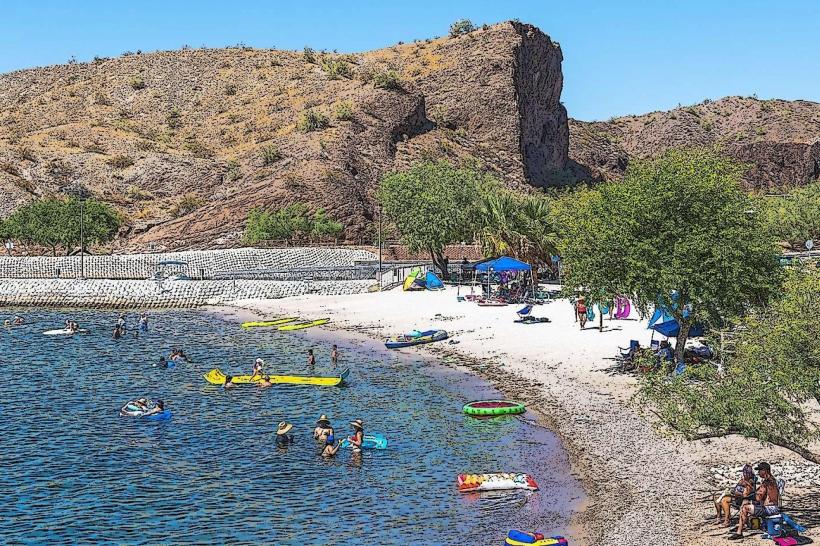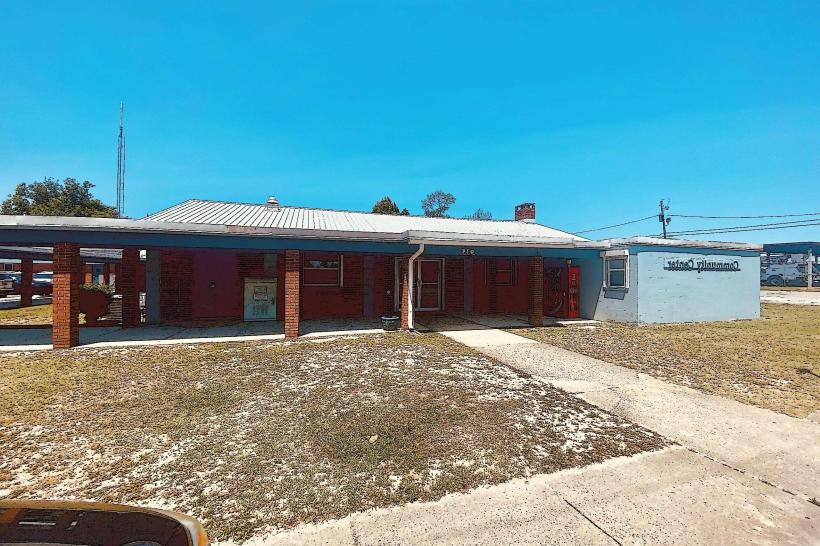Information
Landmark: Bill Williams River National Wildlife RefugeCity: Parker
Country: USA Arizona
Continent: North America
Bill Williams River National Wildlife Refuge, Parker, USA Arizona, North America
Overview
The Bill Williams River National Wildlife Refuge sits in western Arizona, where the river empties into the Colorado just south of Parker, with Lake Havasu City shimmering a short drive away, on top of that the refuge spans about 6,000 acres of diverse terrain, where the sandy flats of the Mojave give way to the cactus-studded landscapes of the Sonoran Desert.Founded in 1993, it works to protect and restore vital riparian and desert habitats along one of the last mostly untouched stretches of the lower Colorado River, where cottonwoods still cast dappled shade over the water, consequently the refuge safeguards a rare patchwork of habitats essential to countless species in this dry landscape, including the largest naturally regenerated cottonwood-willow riparian forest left along the lower Colorado River, where cool shade falls across the water’s edge.These woodlands give countless birds a risk-free area to breed and build their nests, while also offering shady refuge for mammals and reptiles alike, after that cattail marshes, quiet backwaters, and soggy wet meadows teem with aquatic and semi-aquatic life, from shimmering fish spawning grounds to the cool, shadowed refuges where amphibians thrive, for the most part Desert uplands ring the riparian zone, dotted with creosote bush, mesquite, palo verde, and towering saguaro cacti, providing shelter for wildlife built to survive the heat and sparse rain, then the Bill Williams River National Wildlife Refuge, known worldwide for its rich mix of plants and animals, is especially famous for its birds.Sitting along the Pacific Flyway, it draws more than 350 species each year, from tiny hummingbirds to soaring herons, on top of that this area shelters endangered and threatened species like the Southwestern Willow Flycatcher, the Yuma Ridgway’s Rail, and the Yellow-billed Cuckoo, whose call cuts through the trees at dawn.You’ll often spot great blue herons wading in the shallows, along with egrets, owls, hawks, flocks of waterfowl, and an array of lively songbirds, consequently in winter and again in spring, flocks of ducks, geese, and shorebirds sweep in with the migrations, their wings flashing silver against the chilly air.Desert bighorn sheep wander the rocky uplands, and it’s common to spot coyotes, bobcats, beavers, raccoons, or a quick flash of a desert cottontail darting through the brush, furthermore beavers keep wetlands thriving, piling branches into sturdy dams that hold back water and form quiet, mirror-like ponds.The refuge shelters creatures like the Colorado River toad, quick darting lizards, and harmless snakes basking in the sun, furthermore in the middle of the dusty plain, the wetlands serve as a secure haven where frogs and salamanders lay their eggs.The Peninsula Trail is a gentle half-mile loop that winds through cottonwood-willow forest and marshland, where you might spot a heron lifting off from the water’s edge, meanwhile the Delta Loop Trail runs about 1.3 miles, with platforms where you can watch herons glide over the wetlands and view the river meet its fork, under certain circumstances Truthfully, Most trails stay level and easy to trek, making them perfect for families or anyone out for a relaxed afternoon hike, in conjunction with the refuge offers several lookout spots and quiet overlooks where you can snap photos or watch herons glide over the water.Bring binoculars or a spotting scope-they’re invaluable, especially when migration fills the sky with moving wings, equally important you can cast a line at the refuge and reel in striped bass, largemouth bass, or even a hefty catfish glinting in the sun, partially Anglers have to follow the rules to safeguard endangered fish like the razorback sucker and bonytail chub, letting them slip back into the water the moment they’re caught, consequently you can launch non-motorized boats right from the visitor center, where the dock’s wood smells faintly of sun-warmed pine.You can take a motorboat into the marked zones, but you’ll need to idle along-no wakes allowed-to keep the quiet waters risk-free for nesting herons and other fragile wildlife, after that hunting’s permitted, but only in set seasons, and only for certain game-like mourning doves fluttering low over fields, Gambel’s quail darting through brush, and cottontail rabbits rustling in the grass.It seems, You can hunt desert bighorn sheep only if you’re lucky enough to win a state draw permit, furthermore on the refuge, you can hunt only with a shotgun-think the sharp scent of gun oil and the weight of it in your hands.At the Visitor Center, you can browse colorful exhibits on the refuge’s ecology and history, pick up maps and brochures, and chat with friendly staff ready to help, on top of that it’s the main spot where self-guided tours begin and trails open up, with a weathered wooden sign pointing the way.Near the visitor center, you’ll find spotless restrooms and picnic tables tucked under cool shade-perfect for families or friends to relax and share a meal, while every so often, the refuge offers ranger-led walks and talks, where you might spot a heron gliding over the marsh as you learn about wildlife, habitat restoration, and ongoing conservation work.The U, in turn s.From what I can see, Fish and Wildlife Service runs the refuge, working to restore shady streamside habitats, keep the water clear, and safeguard native wildlife, along with we’re working on invasive species control, restoring damaged habitats, and keeping a close watch on endangered species-like tracking nesting sites at dawn.You’ll find us at 60911 State Route 95 in Parker, Arizona, 85344, open every day of the year from the first hint of sunrise until the sky turns murky, as a result the visitor center keeps seasonal hours and is usually open on weekdays, with the door swinging shut by late afternoon, partially There’s no charge to come in-just meander through the gate and enjoy the visit, at the same time accessibility: The trails and facilities are built so visitors with disabilities can move through them with ease, from smooth pathways to wide doorways.Pack a bottle of water, throw on some sunblock, and get ready for the dry, heat-cracked air of the desert, at the same time stick to the refuge rules so you don’t disrupt wildlife-especially when nests are tucked into the grass during spring.The Bill Williams River National Wildlife Refuge safeguards rare riparian forests, quiet wetlands, and rugged desert habitats along the lower Colorado River, where cottonwoods rustle in the wind, to boot you’ll find incredible chances to spot rare birds, hike winding trails, cast a line in the river, and watch wildlife where the desert meets the water.In a way, The refuge opens its trails to the public while carefully protecting fragile desert blooms and rare wildlife, offering an experience that pulls you into the heart of the Southwest’s wild beauty, likewise it’s still a secure haven for migratory birds, a vital refuge for biodiversity in a region where innovative roads and buildings press ever closer.
Author: Tourist Landmarks
Date: 2025-10-06







